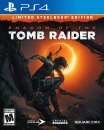Pemalite said:
There are many hardware differences between a PS3 and Playstastion 4 outside of performance, aimed at improving efficiency and visuals, many of which the Switch has or sometimes even exceed.
PS3 had a Geforce 7 class GPU with a core layout of: 24:8:24:8 (Pixel shaders: vertex shaders: texture mapping units: render output units)
The Xbox 360's GPU was more powerful, it was the CPU where the PS3 had a commanding lead.
I was only talking about the 80w model, the highest-end configuration.
The 3060 with 6GB isn't much better.
You might be on the money, but without confirmation it's just a hypothesis.
No. It's literally a worthless measure. |
When we say ps3 pro means a estimate something like the Jump from ps4 to ps4 pro. Now look at the results of ports and it pretty much lines up. I don't care about all the tech talk if games ain't lining up. cause everyone has a story when it comes to tech. How many wiiu ports did switch run at double the framerate basically 0. while ps4 pro did run some ps4 games at double the framerate so calling it a pro its actually more then it deserves.

















































